Is Unichain a positive or negative development? Today's article will explore the architecture of Unichain and understand the "necessity" of Unichain.
Written by: IOSG Ventures
Introduction
For many years, Uniswap has been continuously pushing for functional and innovative reforms to make exchanges more user-friendly and fair. For example, we have seen Uniswap Mobile, the Fillers Network in UniswapX, the ERC-7682 for unified cross-chain intent standards, and the upcoming hooks for customizable AMM pools in Uniswap V4.
On October 10, Uniswap announced their overall optimistic Rollup, Unichain. This chain aims to become a one-stop liquidity hub in the superchain ecosystem, providing traders with near-instant exchange experiences and lower spreads, while maximizing the privacy and integrity of MEV participants in the process using TEE.
While these visions are impressive, users question the need for another L2, with some, including Vitalik, commenting that Unichain = "a Uniswap clone on every Rollup." In other words, he believes that launching a Uniswap clone on a new chain essentially serves the same purpose as launching Unichain itself.
So, is Unichain a positive or negative development? Today's article will explore the architecture of Unichain and understand the "necessity" of Unichain.
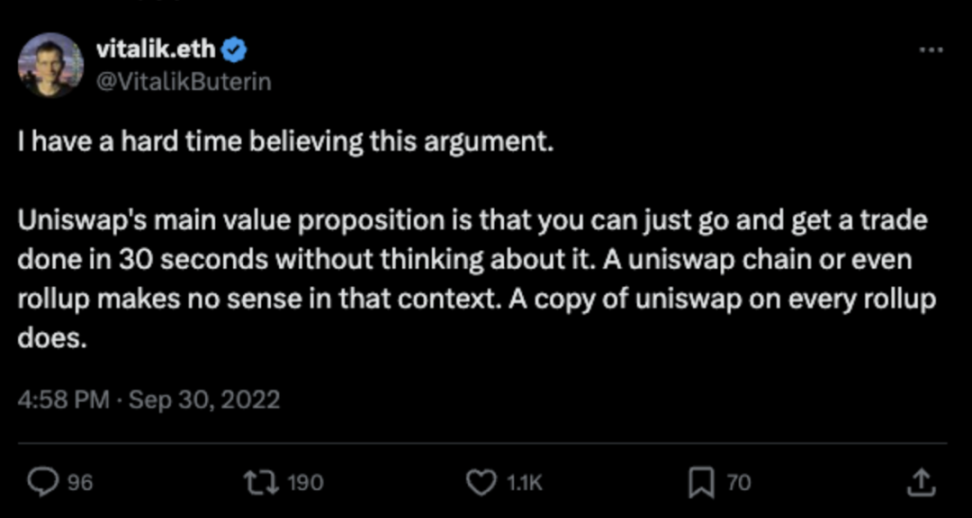
1. What is Unichain?
Unichain is an optimistic rollup designed to execute near-instant transactions while using privacy technology TEE to minimize potential impacts on on-chain LPs and traders.
Since Unichain is built with the same properties and standards as other optimistic rollup chains, it can now leverage interoperability within the superchain ecosystem and access shared liquidity across the entire network.
To this end, Unichain brings four major innovations:
- Rollup-Boost and Sequencer Builder Separation
- Block Building in TEE
- Flashblock
- Unichain Verification Network (UVN)
1.1 Rollup Boost: Sequencer Proposer Separation (SBS)
Block Building is key to addressing the MEV problem.
Before MEV Boost, Ethereum was plagued by censorship risks and poor user experiences. Due to fierce competition among searchers for profit-driven order inclusion, users faced high transaction fees and front-running issues. To address these problems, flashbots built MEV-boost.
MEV Boost distinguishes the roles of block builders and proposers by introducing relayers, submitting the most profitable blocks to proposers for signing. This design effectively decentralizes the MEV extraction process and democratizes MEV profits between validators and professional builders.
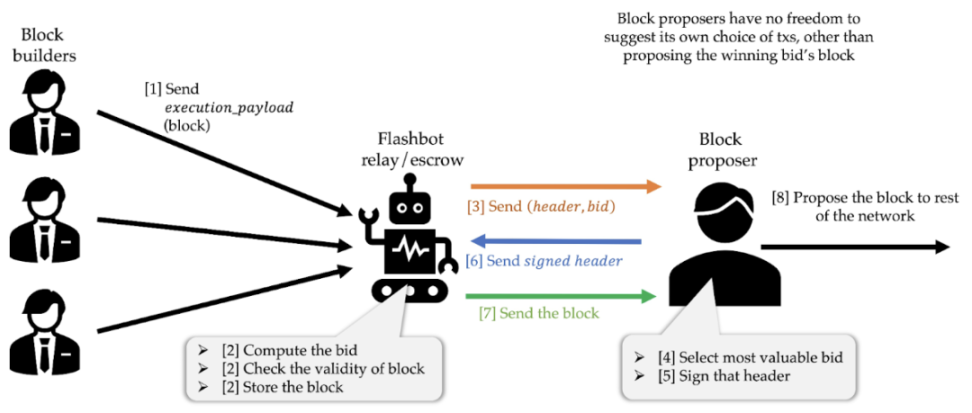
The concept of Rollup Boost is similar to MEV Boost, where L2s enabled with SBS (Sequencer Builder Separation) can separate the block building process from the sequencer's execution engine through a system called "Block Builder Sidecar."
In short, there are four main components within the system:
- OP-node
- OP-geth
- Sidecar / Blockbuilder Sidecar
- External Block Builder
Below is the optimism architecture diagram, where we can see that the sequencer node (also known as op-chain) consists of Op-geth and Op-node.
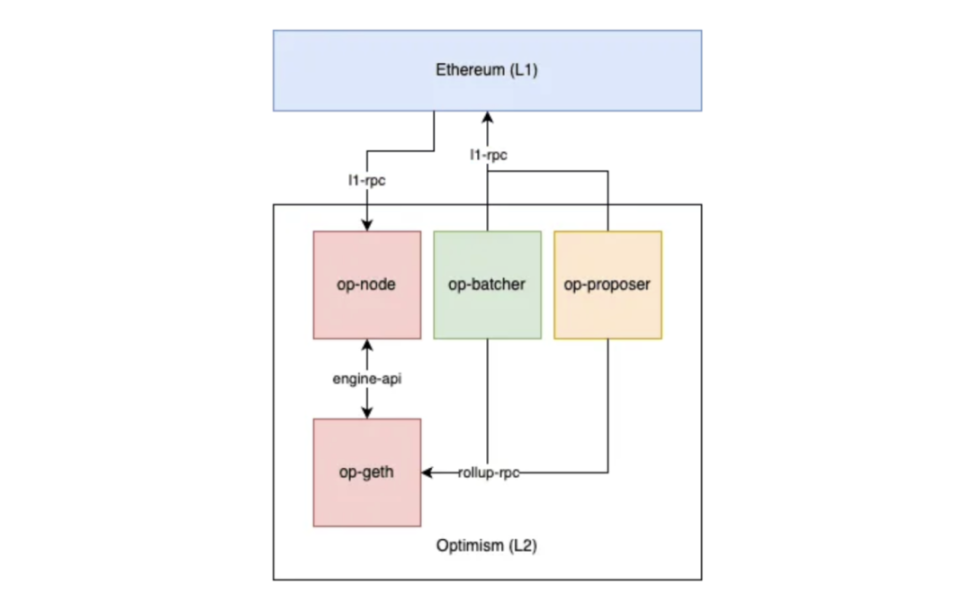
To distinguish the roles of block building and proposing in the sequencer, a component called Sidecar has been added. Sidecar allows OP nodes to receive blocks from external builders, creating a market between block builders and proposers.
The workflow is as follows:
- OP node sends updates to the sidecar.
- The sidecar acts as an intermediary, forwarding updates to op-geth.
- When the OP node requests a block from OP-geth, the sidecar intercepts the request.
- The sidecar then forwards the request to external block builders, creating a "gap" where external builders can bid and compete.
- Upon receiving the external/winning block, the sidecar sends it to the OP node.
- If no block is received, the sidecar forwards the locally generated block.
The main benefit of the block builder sidecar is that upgrades do not require modifications to the OP chain client while allowing for more flexible, streamlined, and censorship-resistant transaction ordering rules. However, the addition of an intermediary (sidecar) may introduce some latency.
1.2 Rollup Boost: Sequencer Proposer Separation (SBS)
Rollup Boost further ensures the integrity of transactions by introducing Trusted Execution Environments (TEE) into the block building process. Thanks to recent hardware advancements like Intel TDX, real-time performance becomes possible.
For those unfamiliar with TEE, they are secure areas within processors or hardware that provide enhanced privacy by preventing unauthorized entities from reading internal data. At the same time, TEE maintains a high level of integrity, as the code within TEE cannot be modified or replaced.
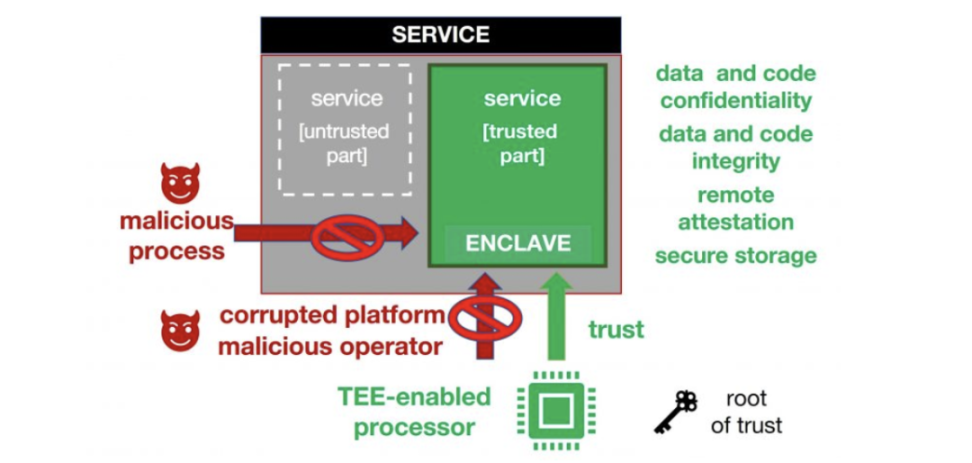
In the context of Rollup Boost, Unichain will use TEE builders to reduce the risk of MEV leakage. This means that when bundles or transactions are sent to the TEE block builder, the integrity aspects of TEE ensure that the order in which transactions reach the builder is not affected by external parties attempting to extract more MEV.
Additionally, TEE provides trustless rollback protection, which can shield users from failed transactions, as TEE can run simulations and detect and eliminate issues before processing any rollback transactions. This not only improves the efficiency of AMMs (as failed transactions will not go through) but also enhances the overall user experience, especially during high transaction volumes.
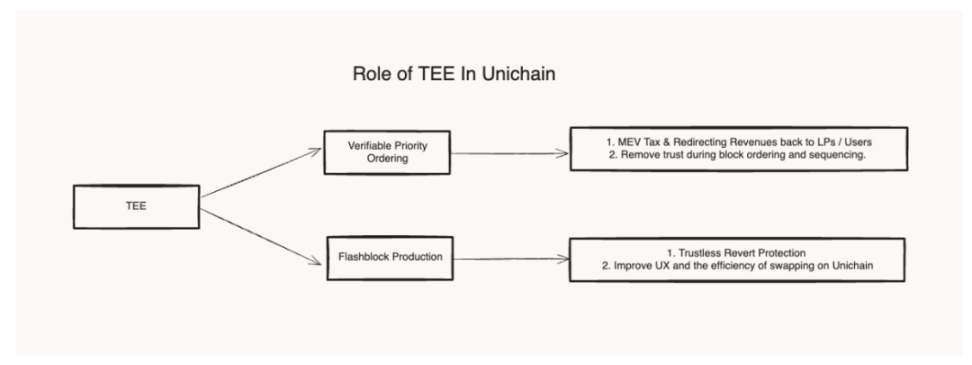
To improve the transparency of transaction ordering and block building processes, execution proofs will be made public to users after block generation. This proof is crucial for verifying priority ordering, a concept that will be explained in later paragraphs.
1.3 Flashblock and Verifiable Block Building
The average block time on Ethereum is 12 seconds, which is very slow and does not meet today's demands for an acceptable transaction experience. Additionally, slow block times expose the network to more MEV opportunities and make it vulnerable to network congestion from spam transaction attacks.
L2s aim to improve Ethereum's scalability by bundling off-chain transactions and submitting proofs to verify computational correctness. To provide a smoother transaction experience, Unichain aims to achieve a block time of 250ms. However, to achieve this, Unichain needs a system capable of continuously transmitting blocks with low latency and near-instant confirmation times. Solana can process 440M transactions in parallel, but achieving such speeds sacrifices a degree of decentralization.
Previously, in most L2 block proposal processes, the serialization of data and state root generation would introduce delays, making fast block times unfeasible.
To address this issue, flashbots created flashblock, which aims to "break down" blocks into smaller shards, shortening the time between blocks to maximize UX/LP advantages.
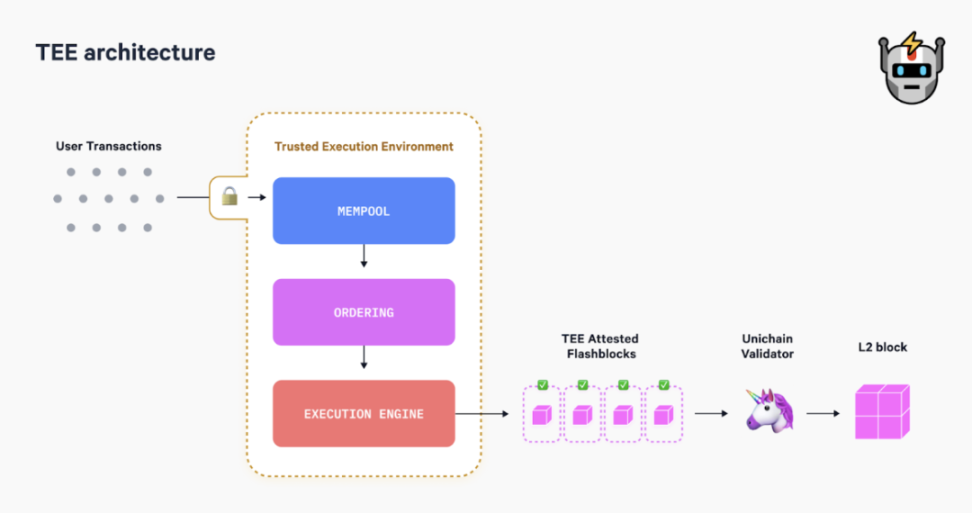
Flashblock is a pre-confirmation issued by the TEE block builder for partial but rapid confirmation.
First, transactions are streamed to the TEE block builder. If L2 has SBS enabled, the block builder will be separated from the sequencer. After sorting and bundling, transactions will gradually form partial confirmations called Flashblocks. Flashblocks will be broadcast from the sequencer to other nodes for verification every 250 milliseconds.
Since the delays are caused by state root generation and serialization in L2, Unichain significantly reduces latency by only calculating the state root and consensus once for multiple partial blocks, thus amortizing the costs of the block building process.
In short, the power of Flashblock lies in:
- Shorter block times reduce the risk of adverse selection costs for LPs.
- Flashblock provides early execution states of the existing state, making wallet and frontend integration easier.
- Fast transactions provide an excellent user experience (UX).
Moreover, since TEE can enforce priority ordering in each Flashblock, applications and smart contracts can now levy MEV taxes, hijack priority ordering for their own benefit, and redistribute MEV to LPs and users.
As Dan Robinson emphasized in his tweet, allowing applications and users to "control" their MEV is one of the main features/purposes of Unichain.
Better yet, priority ordering can be verified through publicly executed proofs in TEE. This allows users to accurately verify how their transactions are executed. This is crucial because it is the only way for users to ensure that priority ordering is conducted fairly.
1.4 Unichain Verification Network (UVN)
Today, most L2 sequencers are centralized, and the behavior of a single sequencer can affect the fairness of MEV, block activity, or finality. For example, if a sequencer publishes an invalid block and submits a fraud proof to challenge it, the resulting chain reversal can actually impact the speed of the chain.
To address potential single points of failure in sequencers, Unichain introduces the Unichain Verification Network (UVN).
UVN adds an extra layer of finality by focusing on verifying blocks through the validators of the underlying chain (Ethereum) when proposing blocks. This process is actually similar to parallelization, where different stages of block building can occur simultaneously within a period.
However, without further details in the documentation, it is too early to make assumptions about the pros and cons.
1.5 $UNI Token
The $UNI token is now more than just a governance token; it is also a utility token.
To become a validator, operators must first stake $UNI as collateral on the mainnet. Smart contracts will track balances and update states through Unichain's native bridge.
At the beginning of each period, the current staked balance will be snapshot, and fees will be distributed proportionally based on staking weight. Validators with the highest $UNI staking weight will be selected for the active set, and they can publish proofs to earn a share of the validation rewards. Validators who miss or fail to publish proofs will not receive rewards, and the rewards will carry over to the next period.
Based on limited public information, we can infer that validation rewards will be:
(Unichain user-paid L2 fees - MEV taxes levied by applications - costs of submitting bundles to Layer 1)
2. Unichain vs Appchain vs General Rollup
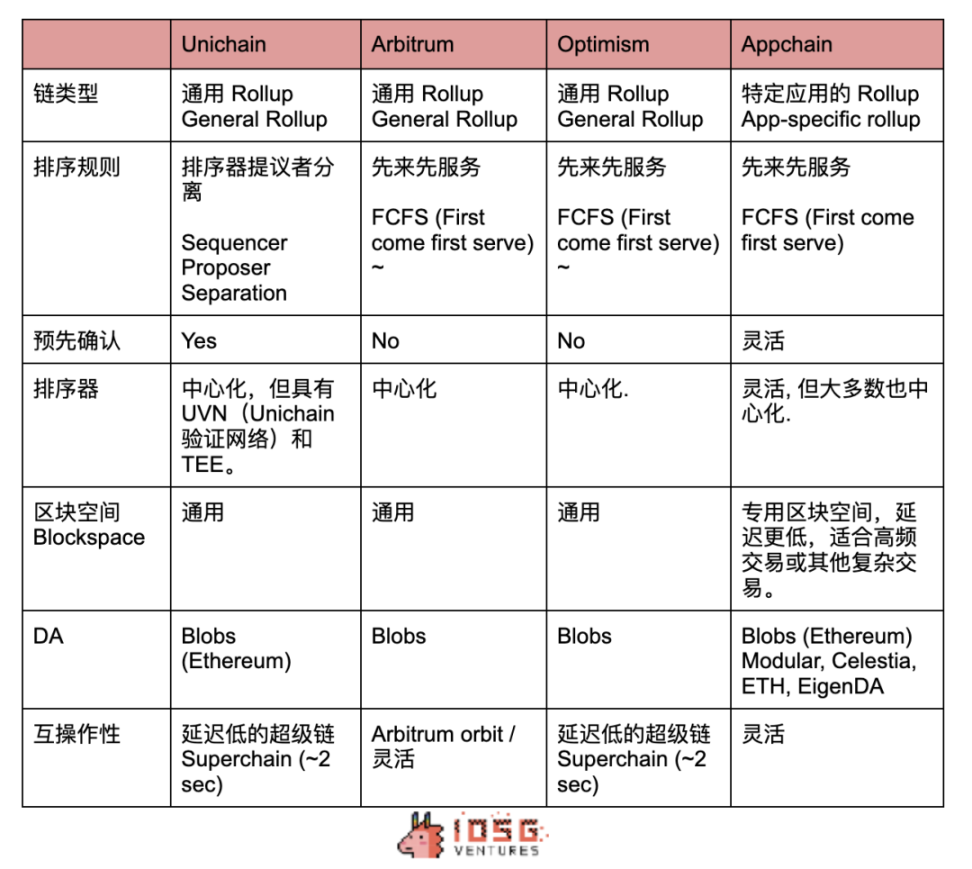
- The main distinguishing factors between Unichain/general rollups and application chains are MEV, pre-confirmations, and block space competition.
- Since application chains can flexibly customize their architecture, they can implement different MEV mechanisms to mitigate issues such as eliminating censorship risks or reducing MEV leakage.
- Meanwhile, Unichain mitigates and restructures MEV by ensuring that transaction ordering is not influenced by any third parties, thanks to the integrity properties provided by TEE. Verifiable priority ordering also ensures MEV fairness and has the potential to redistribute MEV revenue to users and liquidity providers.
- Most sequencers in the market are centralized, allowing them to extract maximum value from order flow. In contrast, Unichain takes a more "public interest" approach, as its MEV redistribution mechanism limits the amount of MEV that the original sequencer can capture to some extent.
- Unichain is built on OpStack, a unified standard for optimistic chains, enabling Unichain to read messages and transfer assets across the superchain through secure messaging, achieving low latency (around 2 seconds) through its native optimistic interoperability design. On the other hand, application chains can leverage different interoperability solutions, such as joining the IBC ecosystem or building L3 on Arbitrum Orbit (although this is not common for OpStack's L2).
3. Conclusion
Unichain is an intriguing concept that not only provides users with a smooth transaction experience through pre-confirmations but also minimizes the window for MEV exploitation due to shorter block times enabled by flashblocks. This innovation also reduces the adverse selection risk for LPs and benefits users/LPs with lower slippage, among other advantages.
On the other hand, the integrity and privacy properties of Trusted Execution Environments (TEE) ensure that users on the chain can enjoy guarantees of fair, verifiable, or application-managed MEV redistribution, thanks to the priority ordering on Unichain.
The validation process of Unichain also protects sequencers from single points of failure, with validators playing a crucial role in quickly finalizing blocks while transforming the $UNI token into a productive asset with yields.
However, by enabling MEV redistribution, the sequencer effectively loses the potential to capture the maximum amount of MEV, but more rewards are being returned to LPs/users on the chain.
While some may argue that Unichain may not have enough appeal to attract assets to migrate to the new chain, I believe that as the L2 ecosystem continues to evolve, interoperability between operational chains will allow Unichain to tap into larger liquidity pools, such as those from Base.
Additionally, besides grants (which Unichain can also provide in USDC after Uniswap DAO), new DeFi apps have sufficient motivation to build on Unichain, as they can benefit from customized MEV redistribution strategies. Meanwhile, assets within the ecosystem can benefit from TEE to mitigate MEV leakage.
Therefore, with its speed, fairness in MEV redistribution, and the interoperability that the chain may offer, Unichain has the potential to become the next hub for DeFi.
免责声明:本文章仅代表作者个人观点,不代表本平台的立场和观点。本文章仅供信息分享,不构成对任何人的任何投资建议。用户与作者之间的任何争议,与本平台无关。如网页中刊载的文章或图片涉及侵权,请提供相关的权利证明和身份证明发送邮件到support@aicoin.com,本平台相关工作人员将会进行核查。




